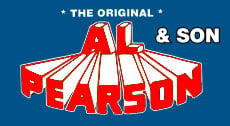Complete Septic Installation Service
We will help you through the process.
If you are building a new home in Oakland, Livingston, Wayne or Washtenaw County and your property is not serviced by municipal sewer service, you will need to install a new septic system. The septic system will be designed and sized to meet the specific demands of your new home, lot limitations and soil conditions. As with a septic system repair, the first step for a new construction septic system is to have a perk test done to determine soil conditions. At that time, a permit can be issued which will detail the requirements for your specific septic system. This entire process can be handled by Al Pearson & Son Septic, your builder, or a combination thereof.
If you are looking for new septic installation, we would love to serve you!

We take care of permits and city requirements
Depending on the city, township or other municipality, you generally have some flexibility as to when the septic system will need to be installed as part of the overall construction project. Some communities allow the septic to be installed as one of the last components of the project. This is often preferred by builders because it allows access to the home by heavy trucks and equipment without the need to worry about running over and/or causing damage to a new septic system.
Building a new home?
Let us take care of your new septic installation!
When Al Pearson & Son Septic installs your new septic system, we will work directly with your builder to establish a timeline and scope of work so there are no surprises for anyone. Because installing a septic system requires the use of heavy earth moving equipment, we may also be able to help with other earth moving projects; saving you time and money!

We work directly with your builder.
When Al Pearson & Son Septic works on a new septic tank and field installation, we will work directly with your builder to establish a timeline and scope of work so there are no surprises for anyone. Like any other trade, we work independently and require little instruction during the installation process. However, unlike other trades, we do like to communicate with you during the construction process. As the homeowner, our goal is to create a working relationship with you so that you understand the system we are installing – and so that after your home is complete we can be the choice for cleaning your septic tank every 1-3 years as part of a regular maintenance schedule.

Another benefit to working with Al Pearson & Son Septic to install your new septic system is our willingness to address other items which require heavy equipment while we are there. We can help grade your lot once we are finished. We can help with seed/straw or install new sod if that is your preference.
Give us a Call! – (734) 981-8400
Whether you are experiencing issues with your existing septic system or installing a new system for your new home, we can help!
What is a Septic Tank System?
A septic system contains an underground septic tank made of plastic, concrete, fiberglass, or other material to treat and dispose of sewage. This system is designed to provide an individualized wastewater treatment option for commercial and residential areas. Although you can install your own septic tank, we recommend professional installation due to the amount of expertise and specialized equipment needed.
Types of Septic Systems:
Conventional Septic System
A conventional septic system uses gravity to move household sewage into the septic tank. From there, sewage is separated into layers, with solid waste settling at the bottom and liquid sewage rising to the top. When liquid sewage rises to the level of the outflow pipe, the liquid waste flows into the drain field where it’s decomposed further.
Alternative Septic System
An alternative septic system collects sewage in the same way as a conventional system, but it breaks down the sewage in the tank using oxygen instead of naturally occurring bacteria. Drain fields for alternative systems generally need less land and release cleaner wastewater.
Engineered Septic System
Engineered septic systems are the most complex and are generally needed due to poor soil or the home being situated on an uphill slope. Just like alternative and conventional septic systems, engineered systems collect and separate waste in a tank. Instead of relying on gravity to drain, the liquid waste needs to be pumped into the leach field so that it’s evenly distributed throughout the land.
